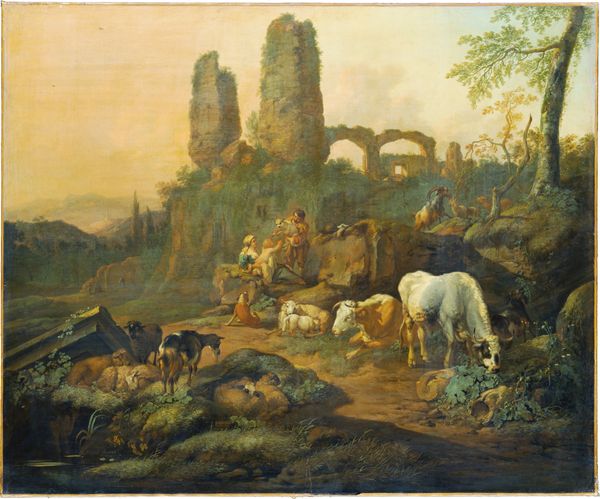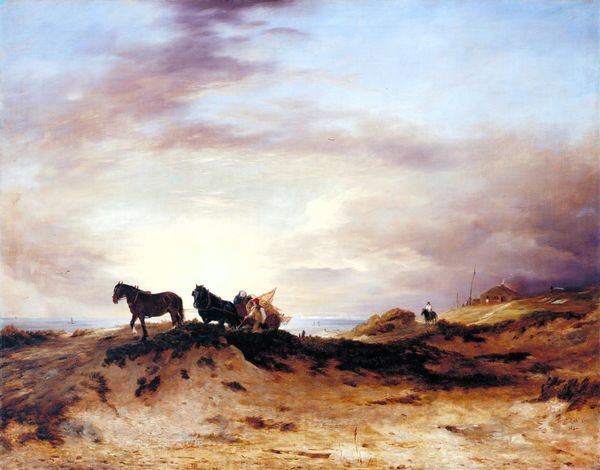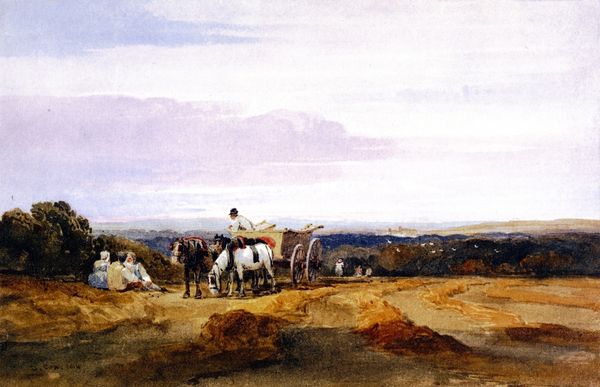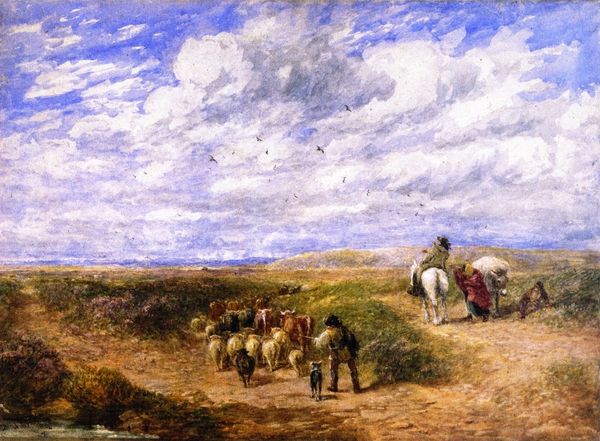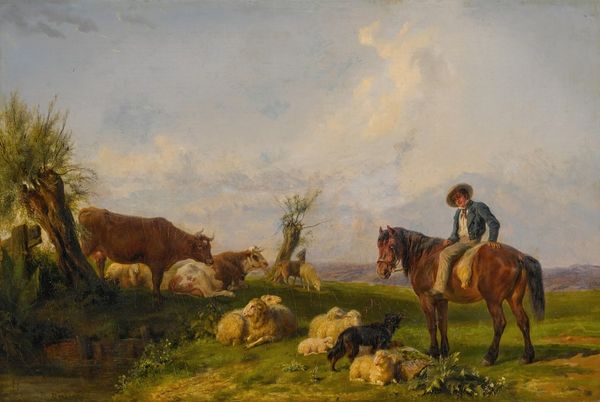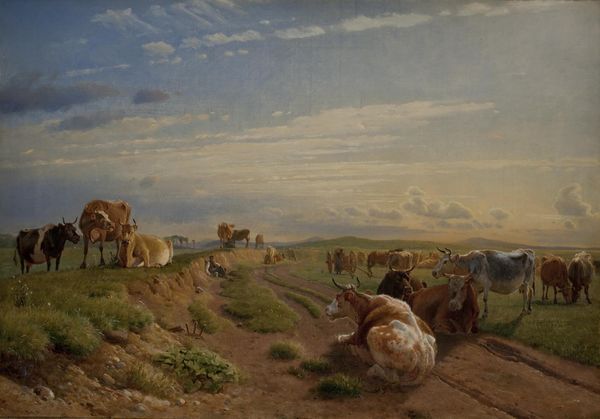
painting, oil-paint
#
painting
#
oil-paint
#
landscape
#
figuration
#
oil painting
#
romanticism
#
orientalism
#
genre-painting
#
history-painting
Copyright: Public domain
Curator: Let’s spend some time with Alexandre-Gabriel Decamps’ “Joseph Sold by His Brethren,” an oil painting from 1838 housed here at the Wallace Collection. Editor: The mood strikes me first—a rather unsettling serenity. The golden light feels almost too idyllic for a scene of betrayal and loss, which creates a tension, doesn’t it? The scale is expansive, which surprises me for such a fraught scene. Curator: Absolutely. Decamps has staged it almost like a landscape painting. Note how he divides the composition horizontally: The top is dominated by the sky, an almost luminous rendering, while the lower part shows us the arid, earthly events unfolding. The materials themselves speak to that tension. It’s oil, meticulously applied, built up in layers, allowing him to create depth, shadow, texture—all very considered decisions in the painting process. The very build up mirrors the emotional weight and gravity. Editor: And that tension is further heightened by the figures themselves. See how the brothers seem almost nonchalant? The camels are more prominent, laden down like commodities. They carry a silent story of trade and human misery, really. The bright colours of the merchants sitting by the camels form a visual and moral contrast with the shadow and despair of the well where Joseph lies. Curator: You highlight the materiality, the commercial aspect embedded in this story. Decamps was known for his Orientalist depictions. It's easy to romanticize those subjects, and to ignore the complex economic relationships underlying them. Joseph himself is practically discarded. It speaks volumes about power dynamics and how easily humanity is exchanged for profit. He is absent from the very transaction that robs him of agency, identity. The choice of paint becomes a crucial component here. Oil allowed him the flexibility to suggest texture. And look at that incredible sky – how he layers the pigment! The brushwork contributes greatly. Editor: Precisely, Decamps wields symbols to remind us that beneath grand narratives lies the crude reality of human transactions. Consider that well and how Decamps positions it in a dark void, where there is the unknown, an absolute absence, perhaps mirroring Joseph's despair. It underscores the psychological darkness alongside the marketplace transaction of betrayal and jealousy. Curator: It forces us to think about the artist's labour, its own transactional relationship to the patron, and the marketplace. The very substance of the work, its oily texture and layered brushstrokes, all become integral to how meaning is conveyed and ultimately received by the audience. The artist is participating in this economic machine. Editor: True. The painting reminds us how visual language, rich with its colors and shapes, holds stories. And it is ultimately our responsibility to continue decoding its moral weight across centuries. Curator: And to keep questioning the means through which that weight comes to be expressed, both in the materials and in the history that's unfolded, and keeps unfolding.
Comments
No comments
Be the first to comment and join the conversation on the ultimate creative platform.




